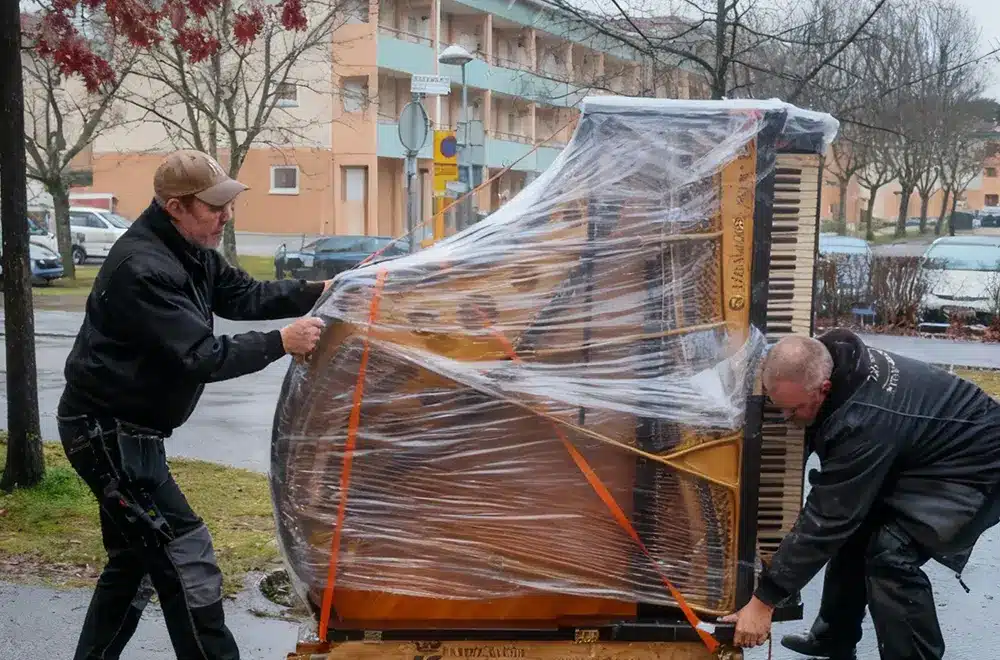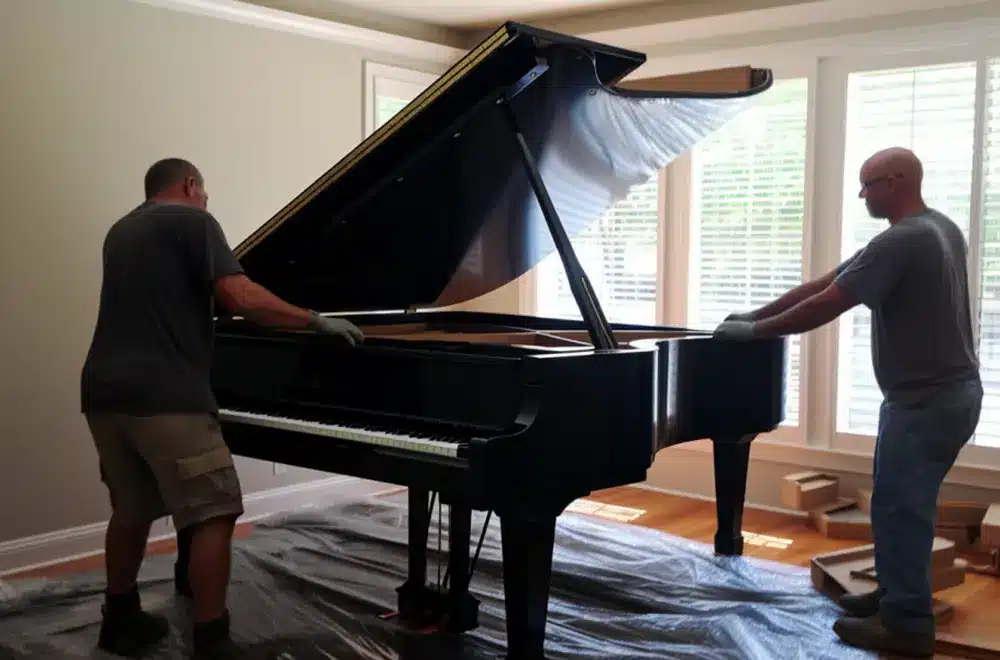Houston heat and humidity aren’t just uncomfortable — they’re a real threat to your piano. From sticky keys to warped wood, the local climate can turn a simple move into an expensive repair job if not handled carefully. Whether you’re relocating across town or preparing for an important performance, understanding how to move a piano safely in Houston’s extreme weather is essential. In this guide, you’ll discover proven strategies from professional Houston piano movers who know the city’s unique climate challenges. From smart scheduling to post-move tuning, these expert tips will help preserve your piano’s tone, beauty, and lifespan — no matter what the weather brings.
Why Houston’s Climate Can Be a Piano’s Worst Enemy
Houston’s climate is known for its intense heat and humidity, and both can wreak havoc on a piano’s delicate internal structure. Heat warps wood and dries out glue. Pianos are built from multiple layers of high-quality wood bonded together with specialized adhesives. When exposed to high temperatures, that glue can soften, and the wood may dry out or crack. Over time, these changes affect the piano’s tuning stability and even its ability to produce clear, consistent tones.
High humidity causes internal swelling. Houston’s moisture-rich air seeps into every part of the piano. Keys can stick, the soundboard may expand, and the instrument’s overall resonance becomes distorted. Even brief exposure to humidity during a move can lead to noticeable changes once the piano is indoors. Sudden storms or flooding during moves pose another major risk. Anyone who has lived in Houston knows how quickly a sunny day can turn into a torrential downpour. Moving a piano without proper weather protection can expose it to damaging moisture in just minutes.
Leaving a piano in a non-climate-controlled truck or storage unit can also be disastrous. Interior truck temperatures can easily exceed 120°F on a hot day, drying out the wood, cracking the finish, and weakening glue joints. Protecting your piano means planning every step of the move with weather safety in mind.
Step-by-Step: How to Move a Piano in Hot or Humid Conditions
Before you attempt any move, it’s essential to understand that moving a piano in Houston’s weather requires special handling and preparation. Here’s how professionals handle it safely from start to finish.
1. Plan Your Move Around the Weather
Timing is everything. Whenever possible, schedule your piano move early in the morning or late in the evening when temperatures are cooler. Midday moves often expose your piano to the harshest sun and highest humidity levels. Check Houston’s extended forecast for any signs of heatwaves, thunderstorms, or tropical activity. If there’s even a moderate chance of rain, it’s better to delay than risk water damage. Professional Houston piano movers always plan ahead, using flexible scheduling to minimize exposure to extreme conditions.
2. Use Climate-Controlled Transport
Not all moving trucks are the same. A standard vehicle without climate control can act like an oven or a steam room, depending on the season, or both in Houston’s case. For safe transport, rely on insulated or air-conditioned trucks designed for delicate instruments. These vehicles maintain steady temperature and humidity levels throughout the journey, protecting your piano’s finish, tuning, and mechanical parts.
3. Wrap and Seal for Moisture Protection
Humidity and moisture are constant threats in Houston, even on seemingly clear days. Before the piano leaves your home, expert movers wrap it in thick moving blankets and moisture-resistant plastic. This dual-layer protection keeps condensation from forming during temperature changes. The piano should also be placed on a padded dolly or skid board (never directly on the ground) to prevent moisture absorption from pavement or grass. Proper wrapping isn’t just about safety; it also preserves your piano’s elegant finish during every stage of the move.
4. Limit Time Outside
One of the simplest yet most crucial piano moving safety tips is minimizing outdoor exposure to prevent scratches on the piano. Even a few minutes under direct heat can raise internal temperatures inside the piano. Aim to keep total outdoor handling under 15–20 minutes. That’s why most piano moving teams operate like clockwork: one crew preps the path while another positions the truck. Coordinated loading and unloading prevent unnecessary delays and reduce your piano’s exposure to Houston’s unforgiving elements.
Don’t Forget: Retuning and Acclimation After the Move
Once your piano arrives safely, resist the temptation to play it immediately. It needs time to rest. Allow the piano to sit for 24–48 hours in its new location so it can adjust to the home’s temperature and humidity. Rapid environmental changes can alter the tension in the strings and soundboard, making early tuning ineffective.
After a week or two, schedule a professional tuning session. This allows the piano’s internal parts to stabilize completely, ensuring that tuning holds longer. If you store or move your piano often, consider investing in a humidity control system to help maintain balance year-round.
Why You Should Always Hire Local Piano Moving Experts
When it comes to protecting your piano from Houston’s unpredictable climate, experience matters. Local piano movers understand how to navigate the city’s unique weather challenges and terrain, ensuring your piano arrives safely and on pitch. These local professionals know that humidity spikes in August and that spring storms can appear without warning. They plan routes, timing, and equipment accordingly, ensuring safe transport no matter the conditions.
They also have access to climate-controlled equipment, from temperature-regulated trucks to moisture-resistant padding and custom dollies. These specialized resources ensure your piano stays safe from the moment it leaves your home to the moment it’s placed in its new location. Plus, local professionals can offer faster logistics and timing control. With shorter travel distances and deep local knowledge, they can coordinate moves efficiently, minimizing outdoor exposure time and handling challenges unique to Houston neighborhoods.
For more insights, check out our dedicated guide: Why Hire a Local Piano Mover in Houston?
Ready to protect your piano from Houston’s unpredictable weather? Request a free weather-ready piano move quote today and let our expert team handle every detail with care.
FAQs: Moving a Piano in Extreme Weather
Can I move a piano in the rain?
It’s not recommended unless absolutely necessary. Even light rain can damage your piano’s finish and internal wood. Professional movers use heavy-duty tarps and moisture barriers to prevent water intrusion during unexpected showers.
Will my piano be safe in a hot moving truck?
Only if the truck is climate-controlled or insulated. Extreme heat can warp the soundboard and loosen glue joints, so avoid regular trucks in summer.
How does humidity affect my piano during a move?
Humidity can cause keys to stick, hammers to swell, and metal parts to corrode. It also disrupts tuning stability. Using moisture barriers and maintaining proper ventilation during transport helps prevent these issues.
Should I use a tarp or wrap when moving a piano?
Yes, but not just any tarp. Movers use specialized padding, shrink wrap, and waterproof covers to protect both the interior and exterior of the piano. Avoid thin plastic sheets that trap heat and moisture.
When should I tune my piano after moving it in extreme weather?
Wait at least one to two weeks before tuning your piano. This allows the piano to acclimate to its new environment. Scheduling tuning too soon can result in unstable pitch as the wood and strings continue to adjust.
Related Posts

How to Move a Piano in Houston’s Extreme Weather Conditions

Discover How to Pack & Transport a Piano Like a Pro
